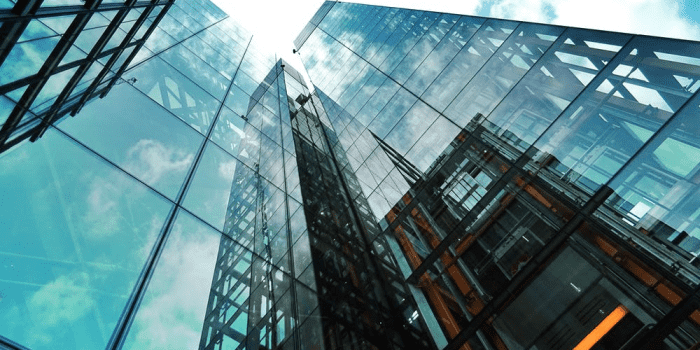The world is rapidly moving toward building vertical cities. You may have noticed this if you have traveled to one of the megacities in the past few years or currently live in one. Those huge, very tall multi-storied buildings have a name, and they are called skyscrapers.
Did you know that there’s a National Skyscraper Day? It’s celebrated in the honor of the famous architect John H. Sullivan, the father of skyscrapers.
There are some interesting facts that we have recently discovered about skyscrapers, and we cannot wait to share them with our readers. Scroll down for some fun skyscraper facts you’ll wish you’d known before.
- Skyscrapers Do Have a Limit
Most people are aware that the famous Burj Khalifa is recognized as the tallest building in the world. The height stands at 2,723 feet or 820 meters.
Another project in Saudi Arabia is supposed to cross 1 km in height, which is currently under construction. Then there’s one in Tokyo that’s double the height of Burj Khalifa. Now, you might be wondering, is there a height limit for building these skyscrapers?
The answer is yes, although you may have already known this if you’re enthusiastic about the world’s tallest building overviews. Apparently, there is a vertical limit, beyond which skyscrapers cannot be built. The curvature of the earth demands both the height and base to be of a certain limit.
- The Word “Skyscraper”
Here’s another fun fact—the word skyscraper existed even before it was used to describe the height of tall buildings. Earlier, it referred to tall things that had a pointed top, such as a triangular sky-sail, a long hat, or a high-standing horse.
- Some Tall Buildings Can Burn You Alive
Buildings that are as tall as skyscrapers are extremely dangerous; in fact, they can lead to severe damage. Skyscrapers can transform into destructive weapons, such as a microwave, and can cause terrible harm.
One London skyscraper is known as “Walkie-Talkie.” One car was discovered with melted parts after having been parked next to it. Later on, a journalist ran an experiment to fry an egg under the extreme heat reflection from the building, and he succeeded.
The science behind this falls back on the architectural design that is commonly used for building skyscrapers. The curved concave surface on the side of the landmark with windows allowed the light to narrow down into a beam, like using a magnifying glass to burn ants.
Luckily, that’s no longer the case for Walkie-Talkie, as it has been modified to control the heat of the reflected light. Pedestrians can now continue to walk past the building without the fear of being burnt.
Did you know that some of these upcoming high-rise projects will be transferred into giant batteries in the near future? Sounds unreal? Well, scientists certainly believe so!
- Skyscrapers Affect Weather
The truth behind skyscrapers affecting weather is rather interesting. The structure of tall buildings such as skyscrapers can often guide the direction of the wind currents in that particular area. Ever heard of “wind tunnels”?
It happens when the wind blows hard and wild at ground level multiple skyscrapers beside each other.
In addition, the wind that’s brimmed with chemical pollutants starts to rise into the air due to the walls of these skyscrapers. As a result, these pollutants remain in the surrounding areas of the building, affecting the weather.
The good thing about new-age technology is that researchers and architects are now incorporating ways to include materials that are resistant to heat in buildings.
- Skyscraper Residents Age Faster
An unknown fact about living in skyscrapers or tall buildings is that it enhances premature aging. In other words, a person ages faster if they reside on top of a tall building. The reasoning behind this is called gravitational dilation—a theory that explains how time passes faster for those who move away from the Earth.
Studies stated that people spending their life living in a skyscraper age faster by a few seconds, in comparison to people who live closer to the ground level of Earth. Interesting, right?
- Skyscrapers Are Designed to Sway
Want to know a scary fact? Skyscrapers are designed to sway in the direction of the wind. So if you are somebody who suffers from motion sickness or is prone to dizziness, you must know for a fact that during a stiff gale, a skyscraper can sway up to three feet.
Some of the recent skyscraper designs incorporate architectural know-how to minimize the motion, by adding hundreds of tons of ballast at the top of the buildings. Luckily, it has worked, so phew!
- Longest Elevator Fall Survived
The world’s tallest skyscraper title was given to The Empire State Building for 41 years straight, meaning there were no skyscrapers taller than the height of The Empire State building until 1971. This was known to be the world record on its own.
During this time, in 1945, on July 28, a B-25 bomber crashed into the landmark, causing the longest elevator fall. A 20-year-old operator named Betty Lou Oliver was in the elevator at the time and suffered massive injuries while falling from the 80th floor.
The accident damaged all the elevator cables, causing her to fall 1000 feet, which is almost 75 stories, leading to serious injuries such as broken legs and back. She was then recognized as the survivor of the longest elevator fall and held the Guinness World Record for this misfortune.
Conclusion
The skyscraper race is going strong, and from the looks of some of the under-construction projects in the megacities, it’s fair to say that it is only going to get stronger. In other words, the obsession of building vertical cities is real.
This brings us to the end of this article about fun skyscraper facts you wish you’d known before. If you want to add to this, don’t forget to comment below.


